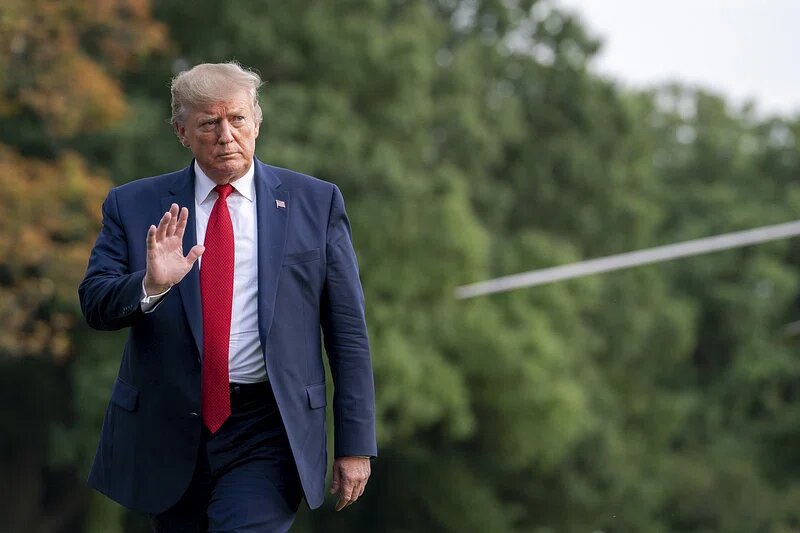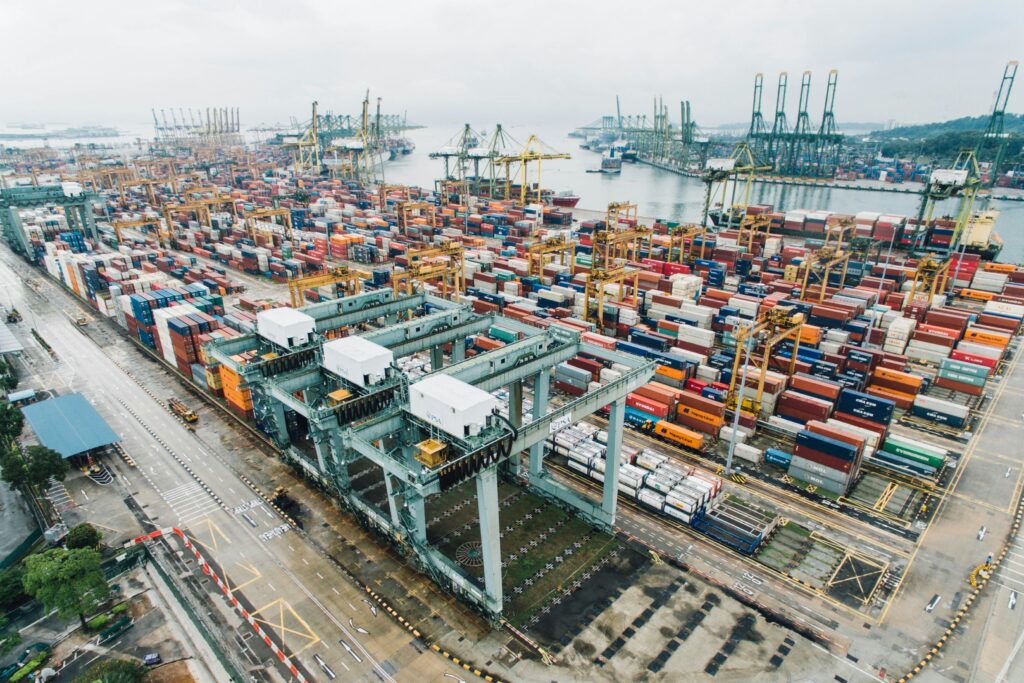Scott Bessent Says Trump Will Raise Tariffs Again on Any Nation That Doesn’t Negotiate in ‘Good Faith’

Scott Bessent Says Trump Will Raise Tariffs Again on Nations Not Negotiating in ‘Good Faith’
[Treasury Secretary Scott Bessent speaking at a podium]
Treasury Secretary Scott Bessent issued a stark warning on Sunday that the Trump administration will reimpose higher tariff rates on countries failing to negotiate trade deals with the United States in “good faith,” potentially returning to the steep rates announced during April’s controversial “Liberation Day” speech.
Trump’s Tariff Strategy: Negotiate or Face Consequences
During an interview on NBC’s “Meet the Press,” Bessent explicitly referenced the higher tariffs imposed after Trump’s April 2 announcement as the consequence awaiting nations that don’t engage sincerely in trade discussions.
“I think that it would be the April 2nd level,” Bessent told host Kristen Welker when asked about potential tariff rates. “Some countries were at 10%, some were substantially higher. The negotiating leverage that President Trump is talking about here is if you don’t want to negotiate, then it will spring back to the April 2nd level.”
This warning comes as the 90-day pause on Trump’s “reciprocal tariffs” approaches its midpoint, with many countries currently paying a baseline 10% tariff while engaging in trade negotiations with American officials.
What Constitutes ‘Good Faith’ in Trade Negotiations?
[International trade negotiation concept]
While Bessent didn’t explicitly define what constitutes “good faith,” his comments suggest the administration is looking for meaningful engagement and concessions from trading partners. Countries deemed uncooperative will face swift consequences.
“This means that they’re not negotiating in good faith,” Bessent explained. “They are going to get a letter saying, ‘Here is the rate.’ So I expect that everyone would come and negotiate in good faith.”
The Treasury Secretary indicated the administration is prioritizing its 18 most important trading relationships, with deal timing dependent on negotiation sincerity. He also revealed plans for regional approaches, stating, “My other sense is that we will do a lot of regional deals – this is the rate for Central America. This is the rate for this part of Africa.”
The ‘Liberation Day’ Tariff Framework Explained
[Global shipping and trade concept]
On April 2, 2025, President Trump unveiled sweeping “reciprocal tariffs” during a White House Rose Garden ceremony he dubbed “Liberation Day.” The president characterized the announcement as “one of the most important days in American history” and “our declaration of economic independence.”
The tariff structure included:
- A baseline 10% tariff applied universally to imports from almost all countries
- Additional country-specific tariffs ranging from 10% to nearly 50% for approximately 60 nations
- Particularly high rates for Asian manufacturing hubs, with Cambodia (49%), Vietnam (46%), and Sri Lanka (44%) facing some of the steepest tariffs
The administration calculated these rates using a formula based on bilateral trade deficits rather than matching actual tariff rates imposed by other countries. Trump described the approach as “kind,” claiming the government would only charge other countries half of what administration calculations suggested based on trading partners’ practices.
US-China Trade Relations: A Special Case
[US and China trade concept]
China has received special attention in the tariff framework. The U.S. initially raised tariff rates on Chinese goods to an unprecedented 145%. Last week, the U.S. temporarily reduced the tariff rate to 30% as the two countries continue high-level trade talks. China reciprocated by lowering its levies on U.S. goods from 125% to 10%.
Bessent characterized these mutual reductions as recognition that the escalating trade war had become “unsustainable.”
“Neither side backed down,” Bessent explained. “Both sides realized that this was unsustainable. So we had the equivalent of an embargo, which is not what either side wanted. You know, it was this constant tit-for-tat escalation. So both sides brought the tariffs down by 115%.”
Strategic Uncertainty as Deliberate Negotiating Tactic
[Business strategy concept]
Bessent acknowledged that “strategic uncertainty” is a deliberate tactic in the administration’s approach to trade negotiations. This uncertainty, characterized by sudden policy shifts and the threat of higher tariffs, is designed to create leverage.
“The negotiating leverage that President Trump is talking about here is if you don’t want to negotiate, then it will spring back to the April 2nd level,” Bessent emphasized.
This strategy has created significant challenges for businesses trying to manage supply chains, production, staffing, and pricing amid rapidly changing trade policies. Companies of all sizes have been whipsawed by Trump’s swift imposition of tariffs and sudden reversals as they seek to navigate the new trade landscape.
Consumer Impact: The Walmart Factor
[Walmart storefront]
The tariff policies have already begun affecting U.S. businesses and consumers. Walmart, the world’s largest retailer, announced last week it would start raising prices later in May due to tariff costs, prompting Trump to publicly criticize the company.
“Between Walmart and China they should, as is said, ‘EAT THE TARIFFS,’ and not charge valued customers ANYTHING,” Trump posted on Saturday.
Bessent claimed he had spoken with Walmart CEO Doug McMillon, who allegedly agreed the company would absorb some tariff costs. “Walmart is, in fact, going to… eat some of the tariffs,” Bessent told NBC, though he added, “I didn’t apply any pressure.”
The Treasury Secretary also highlighted that “the single most important thing” for Walmart consumers is gasoline prices, which he claimed “have collapsed under President Trump,” potentially offsetting some tariff-related price increases.
Progress in Trade Negotiations
[International agreement signing concept]
Despite the tough rhetoric, some progress has been made in trade negotiations. Earlier in May, the Trump administration announced a trade framework with the United Kingdom, with the U.S. rescinding tariffs on British steel and automobiles while U.S. farmers gained increased market access in the UK.
As the 90-day pause period approaches its conclusion in August 2025, trading partners face increasing pressure to reach agreements with the United States or potentially face substantially higher tariffs. The administration appears to be using the threat of returning to the April 2nd tariff levels as leverage to secure more favorable trade terms.
Economic Concerns and Business Response
[Economic data and analysis concept]
Economic experts and business organizations have raised concerns about the potential inflationary effects and supply chain disruptions that could result from the tariffs. The National Retail Federation warned that the tariffs would “cause more anxiety and uncertainty for American businesses and consumers,” emphasizing that U.S. importers, not foreign countries or suppliers, would bear the initial financial burden.
The National Association of Manufacturers expressed concern that the large scale of the tariffs would threaten jobs, supply chains, and investment, potentially undermining “America’s ability to outcompete other nations and lead as the preeminent manufacturing superpower.”
Financial markets initially responded negatively to the April 2 announcement, with the S&P 500 index futures tumbling more than 3% following Trump’s speech. Financial analysts expressed surprise at the tariffs’ magnitude, with some describing the rates as “shockingly high compared to what people were expecting.”
What’s Next for Global Trade Relations?
[Global trade future concept]
With Bessent’s latest comments, the message from the administration is clear: negotiate seriously or face the consequences of higher tariff rates. Countries now face a critical decision about how to engage with the United States on trade issues.
The administration’s approach represents a fundamental shift in U.S. trade policy, moving away from multilateral agreements toward bilateral negotiations backed by the threat of punitive tariffs. This strategy aims to leverage America’s position as the world’s largest consumer market to extract concessions from trading partners.
As the August deadline approaches, businesses and consumers worldwide will be watching closely to see which countries successfully negotiate new trade terms with the United States and which might face the return of the steep “Liberation Day” tariff rates that sent global markets into turmoil in April.
For now, Bessent’s warning serves as a reminder of the administration’s willingness to use tariffs as both negotiating leverage and punishment for those deemed not to be engaging in “good faith” discussions about trade reform.









